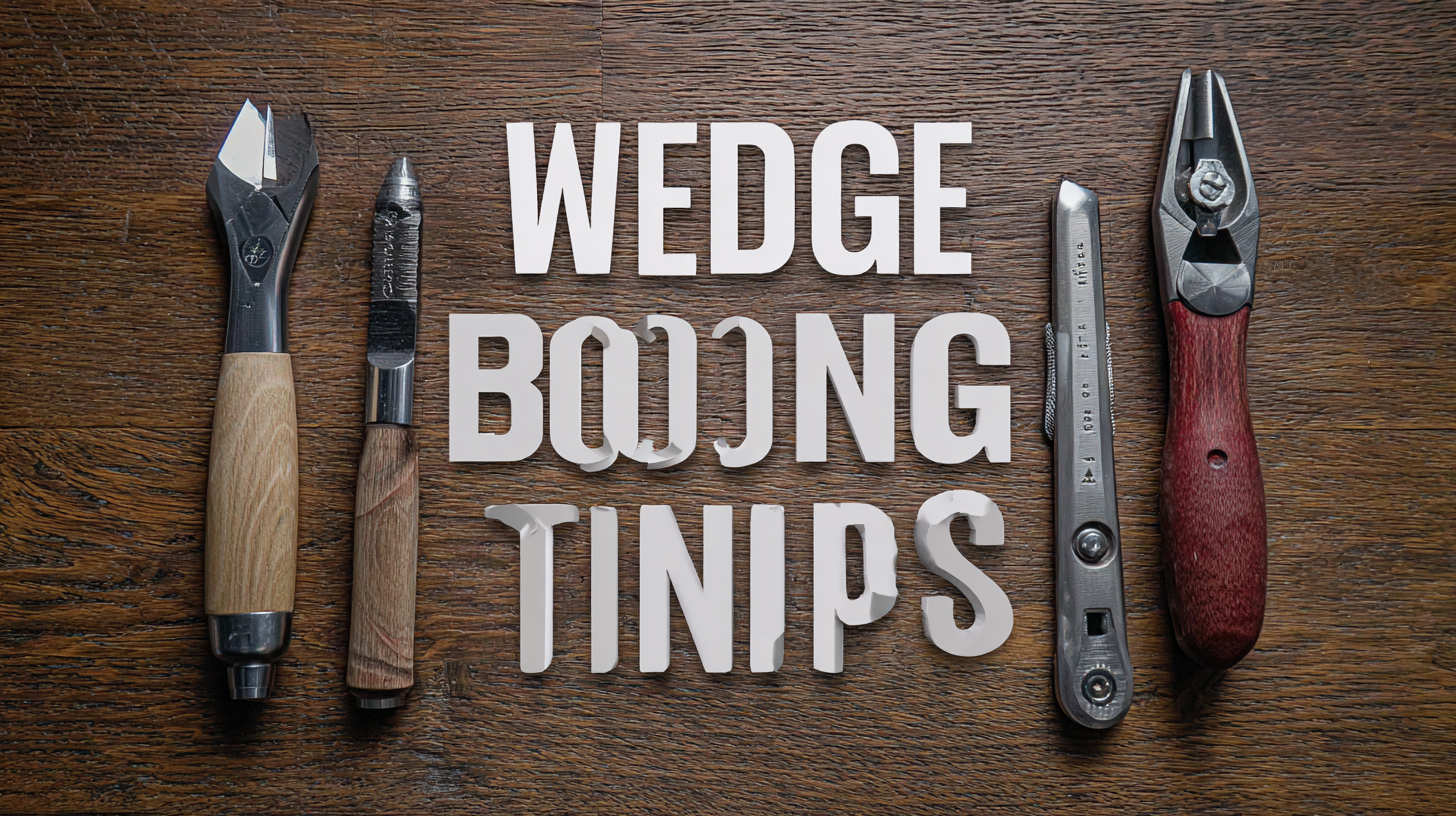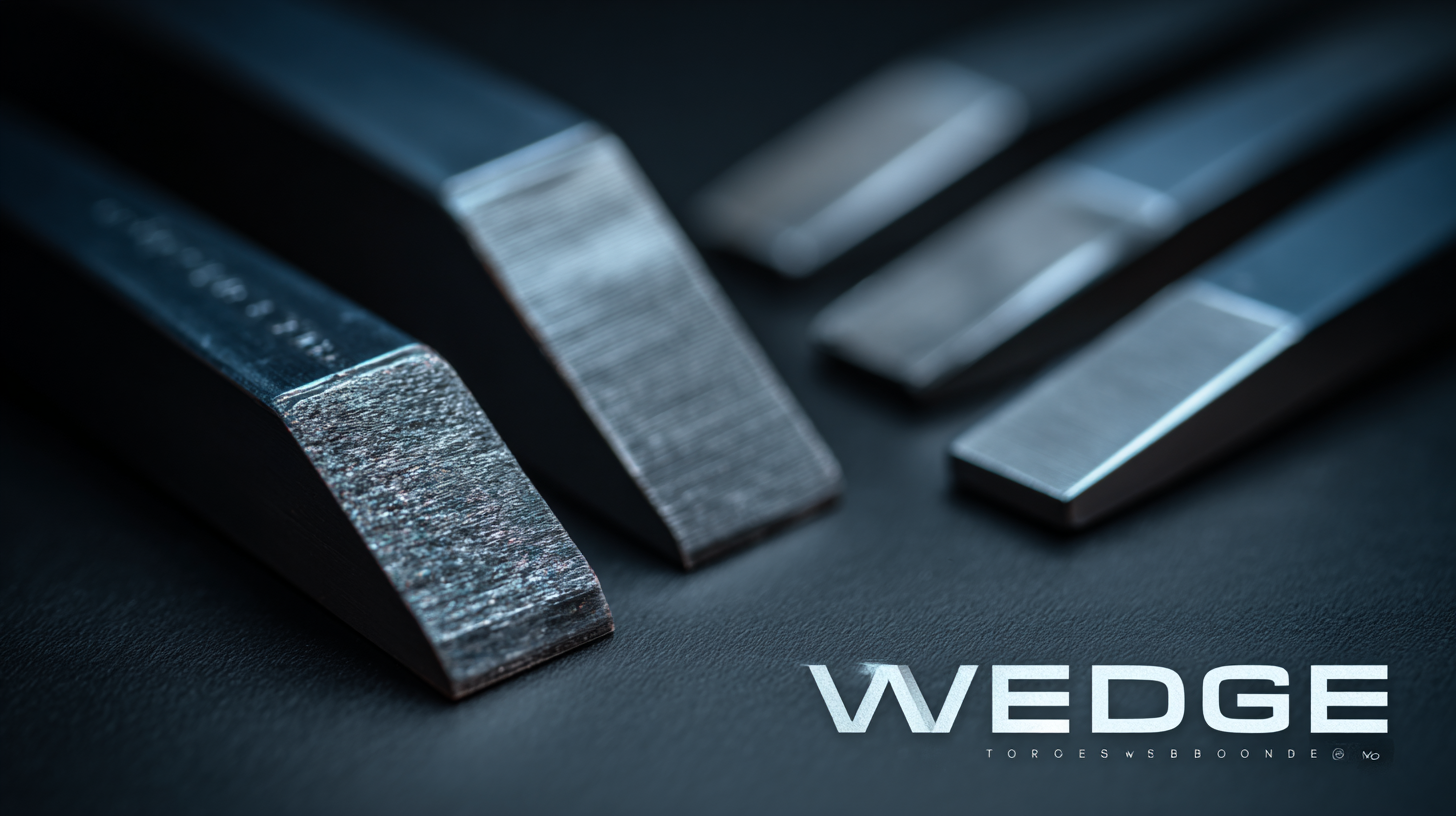When it comes to ensuring the reliability and efficiency of electronic connections, the selection of the right Wedge Bonding Tools is crucial. These specialized tools play a pivotal role in forming strong bonds for various applications, including microelectronics and semiconductor packaging. However, with a myriad of options available on the market, choosing the best wedge bonding tool can be a daunting task. This blog aims to equip you with seven expert tips that will simplify the selection process, helping you to make informed decisions tailored to your specific needs. Whether you are a seasoned professional or a newcomer to the field, understanding the key factors influencing the effectiveness of wedge bonding tools will enable you to optimize your production processes and enhance the overall quality of your electronic assemblies.

When selecting the best wedge bonding tools, understanding the key technical specifications is crucial for ensuring optimal performance and reliability in semiconductor applications.
Wedge bonding has become increasingly relevant, particularly as the demand for integrated circuit packages surges. According to recent market analyses, wire bonding technologies, including wedge bonding, are utilized in approximately 75% of all IC package assemblies, highlighting their importance in the manufacturing process.
One of the essential specifications to consider is the bonding parameters, such as temperature, force, and time, which are critical for achieving strong, reliable bonds.
Thermosonic bonding, a process that combines heat and ultrasonic energy, has been identified as a growing technology in microelectronic packaging. With advancements in packaging technology, selecting tools that can effectively manage these parameters will not only enhance the performance of the bonding process but also address the long lead times currently seen in equipment supply chains.
Additionally, the design and compatibility of wedge bonding tools with various substrates and materials can significantly impact production efficiency. The latest reports indicate that the LED wire bonder market is expanding, driven by new applications in consumer electronics, reinforcing the need for specialized tools that cater to these evolving demands. As semiconductor manufacturing continues to innovate, careful consideration of these technical specifications will empower manufacturers to stay competitive in an increasingly complex landscape.
When selecting wedge bonding tools, it is essential to consider the materials and coatings used in the equipment, as they significantly impact performance and reliability. One critical aspect is the choice of bonding wire. For instance, using palladium-coated copper wires can enhance the shear strength of the joint due to improved palladium distribution over the free air ball, which facilitates stronger connections. Understanding the specific material properties can guide you in selecting wires that offer the best performance for your applications.

Additionally, coatings play a vital role in the durability and effectiveness of wedge bonding tools. Advanced coatings, like TiC ceramic integrated with stainless steel components, provide necessary reinforcement and resistance against wear and corrosion. When choosing your equipment, prioritize tools that incorporate high-quality coatings to ensure greater longevity and efficiency. By focusing on these essential materials and coatings, you can make more informed decisions in selecting the best wedge bonding tools for your projects.
When selecting the best wedge bonding tools, understanding bonding force and pressure parameters is crucial for achieving optimal performance and reliability in semiconductor applications. According to a report by TechInsights, the right bonding force can significantly impact the mechanical integrity of wire bonds, influencing failure rates and long-term stability. Typically, bonding forces in the range of 20-50 grams are recommended for gold and aluminum wire bonds, with precise adjustments based on the specific materials and substrate types used.
In addition to force, the pressure applied during the bonding process also plays a vital role. A study published in the Journal of Electronic Materials highlights that utilizing an average pressure of 100-150 psi can enhance intermetallic formation and ensure uniform bonding quality. This pressure range allows for sufficient plastic deformation of the bonding wire, which is essential for effective adhesion. By carefully evaluating these parameters and their interplay, manufacturers can minimize defects and maximize yield rates, ultimately leading to higher efficiency in production processes.
| Tip No. | Evaluation Criterion | Recommended Range | Notes |
|---|---|---|---|
| 1 | Bonding Force | 1-10 N | Adjust based on material type. |
| 2 | Pressure Parameters | 0.2-1.5 MPa | Increase for thicker materials. |
| 3 | Temperature Control | 100-200 °C | Higher temps may improve bond quality. |
| 4 | Wedge Angle | 30-60 degrees | Optimal for different wire sizes. |
| 5 | Wire Diameter | 0.5-1.5 mm | Select size based on application. |
| 6 | Bonding Speed | 1-5 mm/s | Slower speeds improve integrity. |
| 7 | Material Compatibility | Aluminum, Copper | Ensure tool matches materials. |
When it comes to precision bonding in microelectronics, the size and configuration of your wedge bonding tools can significantly impact the quality of the bond. Selecting the appropriate tool size ensures that it fits the specific wire and substrate materials you are working with, allowing for optimal pressure application during the bonding process. A tool that is too large may not make the necessary delicate connections, while one that is too small could lead to failure due to inadequate coverage.
In addition to size, the configuration of the tool plays a crucial role in achieving consistent and reliable bonds. Tools designed with ergonomic configurations facilitate better handling and positioning. For instance, a tool with an adjustable angle can enhance access to challenging areas on small components. Moreover, consider the materials used in the tool's construction; those designed for high thermal conductivity will ensure effective heat transfer, critical for achieving the necessary bonding temperature without causing damage to sensitive components.
These factors not only contribute to the efficiency of the bonding process but also the repeatability and reliability of the results. Therefore, investing time in selecting the right size and configuration for your wedge bonding tools is essential for achieving superior precision and long-lasting connections in your projects.

When selecting the right wedge bonding tools, understanding the differences between manual and automated options is crucial. Manual wedge bonding tools offer flexibility and precision, making them ideal for low-volume applications or specialized tasks. According to a report by TechNavio, the global manual bonding tools market is projected to grow by 5% annually, driven by the increased demand in niche sectors like aerospace and defense where customization is key. These tools allow operators to have direct control over the bonding process, which can enhance the quality of specific applications, particularly in environments where quick adjustments are vital.
On the other hand, automated wedge bonding tools are gaining traction for high-volume production. With automation, manufacturers report an increase in production efficiency by up to 40%, as stated in a recent study by ResearchAndMarkets. Automated systems reduce human error, ensure consistent bond quality, and can be integrated with advanced monitoring systems to track the process in real-time. This stability is particularly advantageous in industries that require stringent quality control, such as semiconductor manufacturing, where a single bond failure can compromise an entire batch. Hence, choosing between manual and automated tools ultimately depends on the specific needs of production volume and quality assurance.
